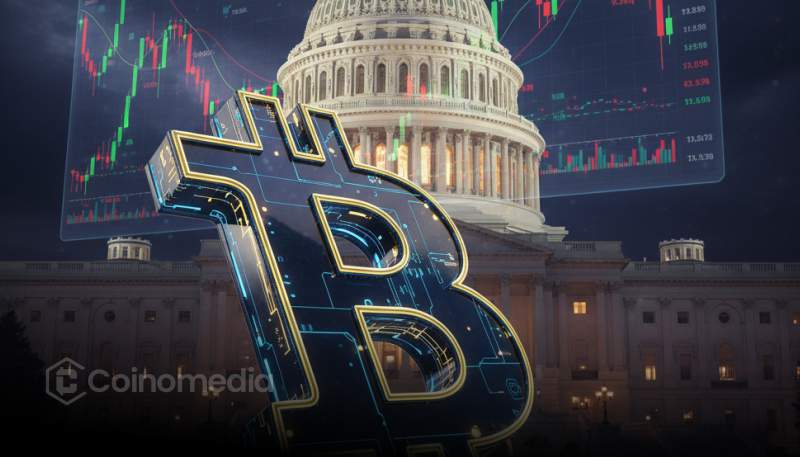US Debt Nears $38T — Can Bitcoin Offer a Solution?
With U.S. debt rising by $6B daily toward $38T, some question if Bitcoin’s limited supply could be a safeguard against endless money printing.

- U.S. national debt grows $6B every day, set to exceed $38T soon
- Mounting debt renews discussion on fiat sustainability
- Bitcoin advocates see it as a hedge against fiscal inflation
U.S. Debt Surge Sparks Bitcoin Debate
The U.S. national debt is rising at a staggering rate of about $6 billion per day, edging close to the $38 trillion mark. Projections suggest that within 20 days, the figure will officially surpass that milestone — a level once thought unimaginable.
This rapid increase underscores the growing fiscal strain facing the U.S. government. High spending, interest payments, and slowing tax revenues have combined to push the debt to record levels. The growing interest burden alone is now one of the largest line items in the federal budget, rivaling defense and healthcare spending.
Amid these developments, crypto advocates are once again asking a familiar question: does Bitcoin solve this?
Bitcoin as a Hedge Against Endless Debt
1. Limited Supply, Unlimited Debt
Bitcoin’s appeal in this context lies in its fixed supply of 21 million coins. Unlike the U.S. dollar — which can be issued indefinitely — Bitcoin’s scarcity is hard-coded, creating a deflationary model that appeals to those worried about monetary debasement.
As governments worldwide increase borrowing and money creation, many investors turn to BTC as a hedge — not because it eliminates debt, but because it provides an alternative store of value independent of national currencies.
2. A Symbol of Fiscal Independence
Bitcoin doesn’t “solve” government debt directly; it doesn’t reduce deficits or restructure fiscal policy. What it offers, however, is financial independence. For individuals, holding BTC can serve as a personal hedge against inflation and the long-term devaluation of fiat currencies.
3. Institutional Shift Toward Bitcoin
Rising U.S. debt and persistent inflation have already driven institutional interest in Bitcoin ETFs and on-chain holdings. As confidence in fiat systems wavers, more investors are viewing BTC as a parallel asset class rather than a speculative play.
The Bottom Line
Bitcoin doesn’t erase national debt — but it challenges the fiat system that allows such debt to spiral. Its transparent, supply-capped design stands in sharp contrast to the U.S. government’s debt-driven economy. Whether it becomes a true hedge or remains an ideological alternative, Bitcoin’s role in the era of trillion-dollar deficits is growing harder to ignore.



